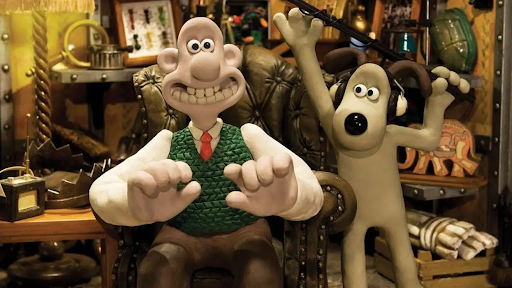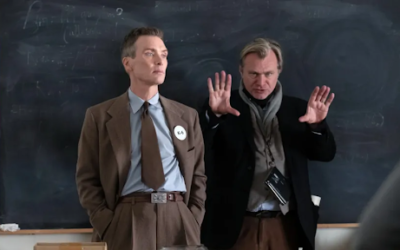Source: Gizmodo
What has to happen for a studio to no longer be able to make films? Theoretically, anything is possible. Maybe revenue can dwindle to such a low level that it’s no longer profitable to keep the studio up and running. Perhaps a change in leadership can lead to certain sectors of a much larger corporation to be deemed unnecessary and forced to close its doors. These are just a small handful of reasons as to why a given studio might have to shut down and cease production on any films and/or programs they had planned on making, and the majority of them can come across as relatively mundane or uninteresting to the average person. However, there are also those rare occasions where the reason is rather unusual, at least compared to how other studios tend to operate. Is it, for example, possible for an animation studio to make films when the most essential material resource they use to create them is no longer available to them? There have recently been some worries about this exact same situation playing out, and they all connect to one the United Kingdom’s most revered animation studios: Aardman Animations, best known for such works as “Chicken Run” and its recent sequel as well as the beloved “Wallace & Gromit” franchise.
To understand the potential problem that Aardman is facing right now requires some understanding as to how it makes its various short and feature-lenghth films. As opposed to other animation techniques like hand-drawn or computer animation, Aardman shoots the majority of its works using the medium of stop-motion. This is a process that requires the construction of physical puppets and sets that animators can arrange in one manner before shooting a single still image of what they’ve created. Once the image has been captured, the puppets are tweaked ever so slightly before another picture can be taken; the process the repeats itself enough for the images, when shown together at a rapid enough rate, create the illusion of a moving image. The basics of this process are more or less akin to any other method of animation, but it’s the use of physical objects that enables the art of stop-motion to mirror live-action filmmaking more closely than another animated medium.
The materials used for stop-motion come a wide variety, one that includes everything from paper cut-outs to carefully crafted mannequins with metal, easily adjustable skeletons. In the case of Aardman, the preferred resource is a type of clay called Newplast plasticine, which it has used since the studio first began making films back in 1972 and has turned into a defining trademark of its various productions. Clay-mation (the term used for stop-motion created using clay figures) may not be a process that’s exclusive to Aardman, but it is one that most will immediately connect to the British studio. It has proven itself to be a vital asset in the making of Aardman’s countless cinematic creations, which is why many grew concerned when it was announced that the company that provides Aardman with its most crucial resource would no longer be able to do so.
The company in question was a small factory located Torquay, a small town found within the English county of Devon, one that, just before its closure, was the only factory that had still been producing Newpast materials (those that take their name from their creator Lewis Newplast). A recently released report from The Telegraph revealed that Aardman was able to purchase whatever plasticine could still be found within the factory’s warehouses, and that all of it is currently being used as part of the production of another upcoming Wallace & Gromit feature, one that’s expected to be released near the end of 2024. After that, Aardman will have to either seek out an entirely new material for the creation of future clay-mation productions, shift to an entirely different medium of animation altogether (most likely that of the digital variety), or, if neither option is feasible enough, shut its doors altogether. The latter two options may only be a worst-case scenario, but given the current state of the studio, one shouldn’t be so quick to disregard the possibility.
In spite of all these worries however, Aardman itself has not publicly expressed any real negativity towards the whole ordeal and instead seems rather optimistic about moving forward. In fact, just a few days after The Telegraph published its article that sent many of the stop-motion studio’s biggest admirers into panic mode, Aardman itself took to social media to directly address the situation and assure those who are most worried that there is currently no reason to sound the alarm. “We are touched about recent concern over the future of our beloved clay creations, but wanted to reassure fans that there is absolutely no need to worry”, the social media statement reads. “We have high levels of existing stocks of modelling clay to service current and future productions and, much like Wallace in his workshop, we have been tinkering behind the scenes for quite some time with plans in place to ensure a smooth transition to new stocks to continue to make our iconic productions.”
If what Aardman has claimed in this statement is correct, then it looks as if the future of the studio is not nearly as bleak as many had feared upon the announcement that the supplier of its most important modelling materials was no longer in operation. With that said, even if there is far less need to worry than initially presumed, this whole matter does demonstrate how Aardman is one of the few major animation studios that has remained committed to the medium on which it had found success. Computer animation, which some would argue tends to be far less time and labor-consuming (although even that can be rather debatable), has all but completely taken over the industry altogether, with the likes of hand-drawn animation and stop-motion becoming an increasing rarity. This is perhaps the biggest reason why so many were quick to express their concerns about Aardman’s future; not only are they worried about the loss of a studio that created some of modern animation’s most beloved characters, but they’re also worried about the potential extinction of an art form that has been all but outright replaced by digital methods.




